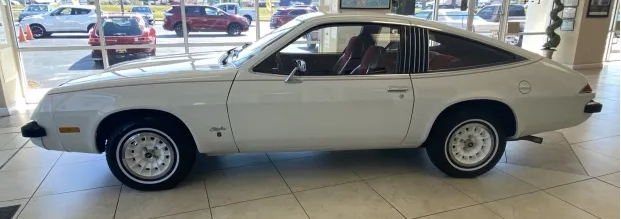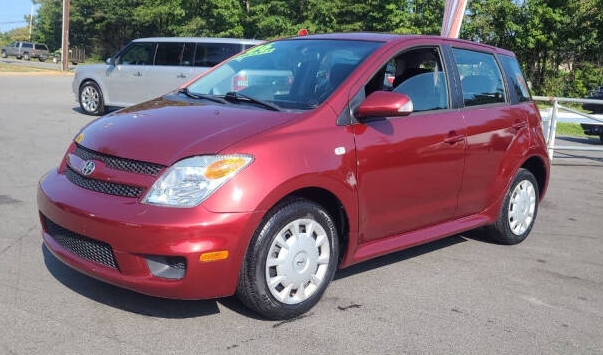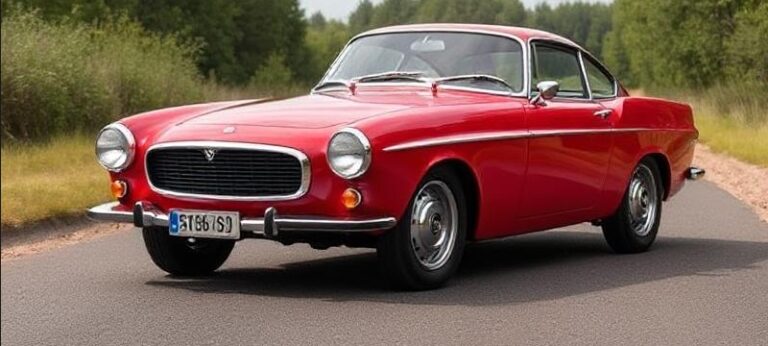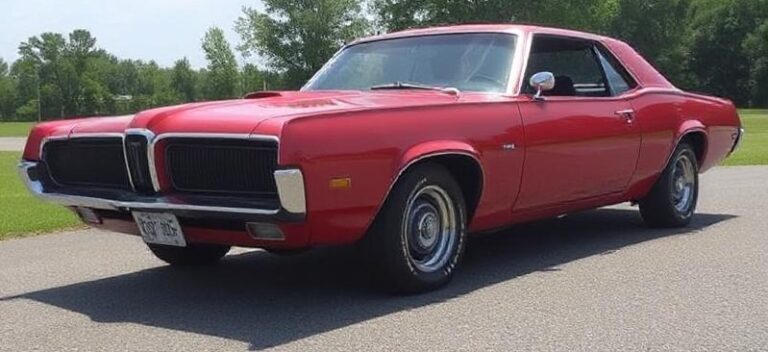The Evolution of the Oldsmobile Firenza
The Oldsmobile Firenza holds a distinctive place in American automotive history as a compact car produced during a pivotal era for the industry. Introduced in the early 1980s, the Firenza reflected General Motors’ strategic shift toward smaller, more fuel-efficient vehicles amid rising fuel prices and changing consumer preferences. Over its production span, the Firenza underwent various updates and trim level enhancements, showcasing the brand’s efforts to appeal to a broad demographic. This article provides a detailed, factual overview of the Oldsmobile Firenza, including its production years, models, and trim levels.
Introduction and Background
Oldsmobile, one of America’s oldest automobile brands, was known for its innovation and commitment to quality. By the late 1970s and early 1980s, the company faced intense competition from Japanese and European imports, prompting the development of smaller, more economical vehicles. The Firenza was introduced as part of this strategic pivot.
The Firenza was built on the GM H-body platform, shared with other compact models like the Chevrolet Cavalier and Pontiac Sunbird. Its production spanned from 1982 to 1988, a period marked by significant evolution in design, technology, and trim offerings.
Production Years and Timeline
| Year | Production Details | Notable Features |
|---|---|---|
| 1982 | Introduction of the Firenza | First model year; available in coupe and sedan forms. |
| 1983 | Continued production | Introduction of new trims and updates to styling. |
| 1984 | Mid-cycle refresh | Minor exterior updates; introduction of new engine options. |
| 1985 | Model line expansion | Addition of new trim levels and features. |
| 1986 | Further updates | Introduction of fuel-injected engines. |
| 1987 | Final year of production | Last model year; phased out in favor of other GM models. |
Model Variants and Body Styles
The Oldsmobile Firenza was primarily offered in two body styles:
- Coupe: A sporty, two-door variant aimed at younger buyers and enthusiasts.
- Sedans: Four-door versions targeting family and practical buyers.
Throughout its production, the Firenza was available in multiple trim levels, each offering varying degrees of luxury, performance, and features.
1982: The Launch Year
Models and Trim Levels:
- Firenza Coupe: The initial offering, emphasizing sporty styling.
- Firenza Sedan: Practical four-door variant.
- Base Trim: Basic features aimed at budget-conscious consumers.
- SL: The sportier trim with additional features and styling cues.
- GT: The performance-oriented model designed for enthusiasts.
Engine Options:
- 2.0-liter Iron Duke I4 engine, producing approximately 86 horsepower.
- Optional 2.8-liter V6 engine (available in later models), delivering around 110 horsepower.
Features:
The 1982 Firenza was equipped with standard features such as vinyl seats, manual windows, and basic radio systems. The GT trim added sportier exterior accents, rally-style wheels, and optional sport suspensions.
1983: Refinements and New Trims
Models and Trim Levels:
- Base: Continued as the entry-level offering.
- SL: Enhanced with upgraded interior features and trim.
- GT: Maintained as the sporty flagship, with performance upgrades.
- Hatchback: Introduced for added versatility.
Engine Updates:
- Introduction of optional 2.8-liter V6 engine across trim levels.
- The Iron Duke I4 remained standard in base models.
Features:
- Optional air conditioning and upgraded audio systems.
- New exterior color options.
- The GT trim received sportier body kits and handling packages.
1984: Mid-Cycle Refresh and Technological Upgrades
Design Changes:
- Exterior styling was subtly refreshed with new grille designs, redesigned bumpers, and updated lighting elements.
- Interior received improved dashboard layouts and new instrumentation.
Trim Levels:
- Base: Maintained as the affordable option.
- SL: Sportier features, including alloy wheels and upgraded upholstery.
- GT: Continued as the high-performance model, with added aerodynamic enhancements.
Engine and Performance:
- The 2.8-liter V6 engine became more widely available.
- Introduction of fuel injection technology on certain engines to improve efficiency and performance.
Additional Features:
- Optional cruise control.
- Improved suspension systems for better ride quality.
- Enhanced safety features, including optional rear defoggers.
1985: Expanded Model Line and Features
New Variants and Trims:
- Firenza Sport: A new trim aimed at youthful buyers, featuring sport-tuned suspensions, unique decals, and sportier interior accents.
- Limited Editions: Occasionally, Oldsmobile offered special editions with unique paint colors and badge packages.
Engine Options:
- The 2.8-liter V6 engine became standard on higher trims.
- The Iron Duke I4 remained standard on base models.
Technological Improvements:
- Introduction of electronic fuel injection (EFI) on the V6 engines.
- Availability of a 4-speed manual transmission on sportier trims.
- Optional power steering and upgraded braking systems.
Interior and Convenience Features:
- Vinyl and cloth upholstery options.
- Improved sound insulation.
- Optional tilt steering wheels.
1986: The Final Major Updates
Design and Styling:
- Exterior updates included new grille designs and revised taillights.
- The Firenza adopted a more aerodynamic profile, aligning with industry trends.
Trim Levels:
- Base: Retained simplicity and affordability.
- SL: Added luxury touches, including upgraded upholstery and interior trim.
- GT: Continued as the performance flagbearer, with sport suspension and styling cues.
- Sport: Reintroduced as a more aggressive, performance-focused variant.
Engine and Performance:
- The 2.8-liter V6 engine received further refinements, including fuel injection.
- Power outputs remained around 110 horsepower.
- The Iron Duke I4 remained available in base models.
Additional Features:
- Optional anti-lock brakes (ABS).
- Upgraded suspension components for better handling.
- More standard convenience options like power windows and locks.
1987–1988: The End of the Line
Discontinuation and Legacy:
By 1987, Oldsmobile phased out the Firenza from their lineup, replacing it with other compact models such as the Cutlass Calais and the Cutlass Ciera-based vehicles. The 1988 model year marked the final production year for the Firenza, with remaining inventory sold through dealer channels.
Models and Trim Levels:
- The 1987 and 1988 Firenza models largely retained the previous year’s features and trims, with minor updates.
- The sporty and performance trims (GT and Sport) were phased out earlier, leaving more basic trims in the final years.
Engine Options:
- Continued availability of the 2.8-liter V6 with fuel injection.
- Iron Duke I4 variants persisted in lower trims.
.
NO MORE dead batteries with this:

.
Summary and Significance
The Oldsmobile Firenza served as a reflection of the shifting automotive landscape during the 1980s. Its evolution from a basic compact to a more refined and technologically equipped vehicle showcases GM’s efforts to adapt to market demands. The Firenza’s various trims, from the economical base models to sporty variants like the GT and Sport, allowed Oldsmobile to target diverse customer segments.
Throughout its production, the Firenza was appreciated for its handling, fuel efficiency, and the availability of performance features in certain trims. While it was eventually phased out in favor of other models, the Firenza remains a noteworthy example of American automakers’ response to the compact car boom and the rise of performance-oriented trims in everyday vehicles.
Conclusion
The Oldsmobile Firenza’s history is a testament to the automotive industry’s dynamic nature during the 1980s. From its debut in 1982 to its final year in 1988, the Firenza evolved through multiple model years, trim levels, and technological advancements. Its various configurations—ranging from economical sedans to sporty coupes—highlight its versatility and the brand’s efforts to cater to a broad audience. Today, the Firenza remains a nostalgic piece of Oldsmobile’s legacy, representing a period of innovation and adaptation in American automotive history.







